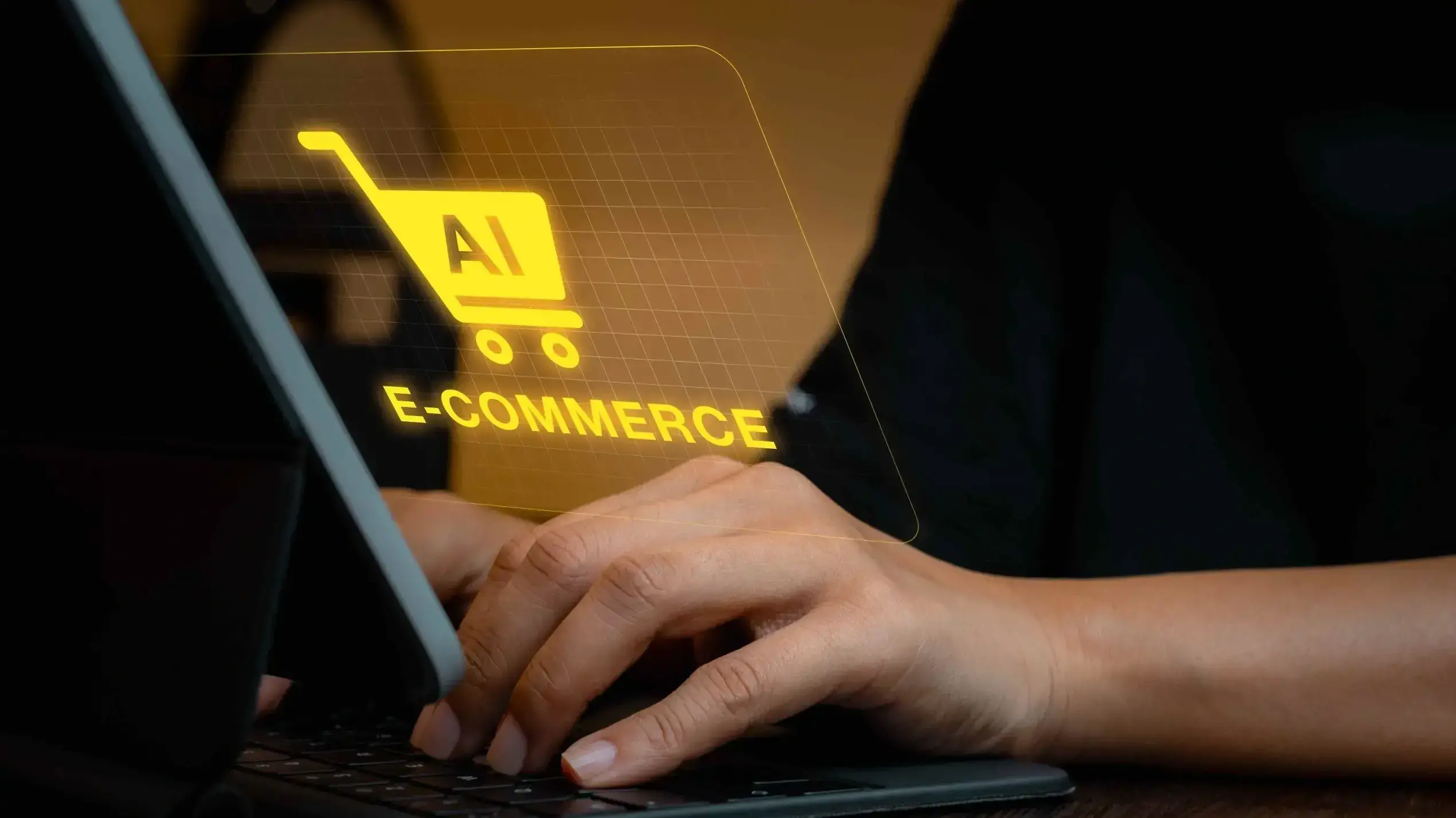Online shopping has become a norm, with eCommerce slated to hit $8 trillion by 2027.
Thanks to giants like AliExpress, eBay, and Amazon, shopping from home is easier now than ever, with over 2 billion people buying online on average per year.
If you're new to selling online, choosing between eCommerce platforms and marketplaces can be daunting.
Not to worry though, in this article we’ll cover everything you need to know about eCommerce vs Marketplace, so you can make an informed decision.
What Is an E-commerce Platform?
An eCommerce platform is a software solution that allows selling and purchasing items on the internet.
eCommerce platforms use a variety of technologies, including inventory management, online payments, data collection, digital marketing, supply chain management, mobile shopping, and electronic funds transfer, to streamline online shopping and selling.
Some of the most popular eCommerce platforms nowadays include Wix, WooCommerce, Magento, BigCommerce, Shopify, and so on.
For small businesses looking for an easy setup, WooCommerce, Squarespace, and Shopify are great choices. BigCommerce and Magento are ideal for larger companies.
What Is a Marketplace?
A marketplace is a site where multiple sellers offer products.
Marketplaces attract customers with their wide range of products and numerous reviews, much like busy shopping malls in the real world.
How Does a Marketplace Work?
A marketplace facilitates transactions between buyers and sellers.
It operates by providing a space—either physical or digital—where sellers can list their offerings and buyers can browse and make purchases.
Etsy is an example of a digital marketplace. Unlike your typical online store, Etsy doesn't handle shipping, as sellers send their own products.
The company simply offers safe shopping, and secure payment methods, and maintains the site.
Marketplaces like Etsy earn by charging a membership fee, a per-sale commission, or both.
They're a great option for beginners and those who prefer not to manage a website's shopping experience and maintenance.
Advantages And Disadvantages of E-commerce
Advantages
Disadvantages
Advantages And Disadvantages of Online Marketplace
Advantages
Disadvantages
Ecommerce Platform Comparison

- Wix: Wix is a drag-and-drop website builder that offers domain name registration, web hosting, and customizable template. If you want to use the eCommerce features provided by Wix, you're going to have to upgrade to a paid plan.
- WooCommerce: If you're familiar with WordPress, you've surely heard about WooCommerce, since it's an add-on to this platform. With WooCommerce, there are plenty of plugins and apps you can add to your store.
- Shopify: Shopify is one of the best eCommerce platforms. This robust platform comes with features and tools for drop shipping and multichannel selling, so you can sell on third-party marketplaces, social media, at your retail store, and on your website. There are over a hundred themes you can choose from to customize your site.
- Magento: Magento is ideal for companies that want a flexible and powerful system they will be able to customize. If you want to build and manage the whole infrastructure by yourself, you're going to need advanced development and coding skills to pull this off.
- BigCommerce: Valuable features of BigCommerce include multichannel selling on third-party marketplaces and social, SEO tools, and international selling. However, these powerful tools are also complex.
- Squarespace: Squarespace is known for its beautiful design templates and ease of use. It’s a good option for small to medium-sized stores and includes integrated eCommerce features, though customization options are somewhat limited compared to other platforms.
- PrestaShop: PrestaShop is an open-source eCommerce platform that offers a high degree of customization. It’s suitable for businesses with a technical team or those who don’t mind hiring developers to set up and manage their store.
- Volusion: Volusion offers an all-in-one eCommerce solution with features like in-house payment processing, inventory management, and marketing tools. It’s user-friendly but may lack some advanced customization options found in other platforms.
- Weebly: Weebly, now a part of Square, provides a straightforward drag-and-drop interface with integrated eCommerce capabilities. It’s suitable for small businesses and startups looking for an easy-to-use platform with basic eCommerce functionalities.
- OpenCart: OpenCart is another open-source eCommerce solution that is highly customizable. It supports multiple languages and currencies, making it a good choice for international sellers. However, it requires some technical knowledge to set up and maintain.
- Ecwid: Ecwid can be added to any existing website or social media page, allowing you to sell products without creating a new site from scratch. It’s easy to use and integrates well with various platforms, making it a flexible option for small to medium-sized businesses.
- 3dcart (now Shift4Shop): Shift4Shop is an eCommerce platform that offers a wide range of features, including SEO tools, social media integration, and a variety of payment options. It’s suitable for businesses of all sizes, though the learning curve can be steep for beginners.
- Big Cartel: Big Cartel is designed for artists and makers who want to sell their work online. It’s simple to set up and use, with straightforward pricing and basic eCommerce features. It’s best for small stores with a limited number of products.
Marketplace Websites Comparison

- Amazon: Amazon is well known as the site that has everything, and it gets a lot of traffic on a daily basis.
- eBay: On eBay, you can let demand set your product prices or choose a fixed price to prevent bidding. The pricing format is your choice.
- Etsy: Etsy is a great place for an artisan or a collector who's looking to reach a large number of buyers for their products. Also, Etsy allows sellers to sell DIY or Do It Yourself kits, so that customers can use them to make their own custom products.
- Facebook marketplace: Facebook marketplace allows users of Facebook to post pictures of their collectibles and garage sale items and set the price for buyers.
- Instagram shopping: Instagram Shopping is a set of features that give people the opportunity to shop your brand's videos and photos across Instagram.
- Google shopping: With Google Shopping, you're browsing products from sellers and advertisers who have decided to feature their products on this marketplace.
- Wildberries: Wildberries is one of the fastest-growing online fashion retailers that allows users to sell a wide range of products, including shoes, books, electronics, jewelry, food, and much more.
- AliExpress: AliExpress is a popular online marketplace for buying products at much more affordable prices than Amazon and other marketplaces. It was launched in 2010 by the Alibaba Group.
- Rakuten: Rakuten is a Japanese e-commerce and online retailing company that allows sellers to reach a global market. It offers a variety of products, including electronics, clothing, and household items.
- Newegg: Newegg is a popular online retailer for tech enthusiasts, offering a wide range of electronics, computer hardware, and software. It's known for its detailed product listings and customer reviews.
- Walmart Marketplace: Walmart Marketplace allows third-party sellers to list their products on Walmart’s website, giving them access to a large customer base. It's suitable for sellers of various product categories.
- Mercari: Mercari is a popular marketplace app for buying and selling items. It offers a simple interface and is especially known for second-hand goods, including clothing, electronics, and home decor.
- Poshmark: Poshmark is a social commerce marketplace where people can buy and sell new or used clothing, shoes, and accessories. It's especially popular for fashion items and allows for social interaction between buyers and sellers.
- Bonanza: Bonanza is a marketplace for unique items, including fashion, home decor, and art. It’s a seller-friendly platform with low fees and a focus on creating a positive selling experience.
- OfferUp: OfferUp is a mobile marketplace for buying and selling locally. It’s a convenient platform for listing items quickly and reaching buyers in your area, covering a wide range of product categories.
Difference between E-commerce and Marketplace
| Aspect | Online Marketplace | eCommerce Website |
|---|---|---|
| Time and Money | Less money and time needed at the beginning | Requires more investment in features, functions, integrations, custom designs, and technical expertise |
| Volume | Lower profit margin due to commission fees | Higher profit margin as there are no commission fees. All profits remain with the website owner (you). |
| Inventory Management | No inventory management is required as it's a platform for sellers to connect with buyers | Requires inventory management, though drop shipping can alleviate some difficulties |
| Scalability | High scalability with lower financial risk, as sellers do not need to own products | Higher financial risk compared to marketplace owners, affecting scalability. |
| Marketing and Brand Recognition | Limited customer access leading to challenges in building loyalty and brand awareness. No customer communication or analytics. | Direct customer engagement, allowing for loyalty building, brand awareness, and access to customer analytics. |
| Traffic and Audience Engagement | Naturally attracts a larger audience with a wide variety of categories and products, offering more engagement opportunities. | Requires significant effort and investment to attract traffic and engage the audience. However, it allows for exclusive customer interaction and the potential for higher brand engagement once traffic increases. |
The Psychology of Online Shopping: Understanding Consumer Behavior

Understanding the psychology behind online shopping can empower sellers to craft strategies that resonate with consumer behaviors and preferences.
Here’s a closer look at the factors influencing online shopping decisions:
1. Ease and Convenience
The primary appeal of online shopping is its convenience. Shoppers value the ability to browse and purchase products anytime, anywhere, without the need for physical store visits.
2. Visual Appeal and Website Design
Aesthetically pleasing and easy-to-navigate websites create positive first impressions and can significantly impact purchase decisions. Clear images, engaging layouts, and straightforward navigation enhance user experience.
3. Social Proof and Reviews
Buyers often look to others before making their own purchasing decisions. Reviews, ratings, and testimonials serve as social proof, building trust and influencing behavior.
4. Fear of Missing Out (FOMO)
Limited-time offers and exclusive deals can trigger a sense of urgency, pushing consumers to make purchases to avoid missing out on a good deal.
5. Emotional Engagement
Emotional connections, whether through brand storytelling, product descriptions, or targeted marketing, can drive purchases. Shoppers often buy based on how a product makes them feel or the values it represents.
6. Decision Fatigue
Overwhelmed by too many choices, consumers may either postpone buying decisions or make impulse purchases. Simplifying choices and guiding decision-making can help mitigate this.
7. Price Sensitivity
Price plays a significant role in consumer decisions, with many shoppers comparing prices across platforms before making a purchase. Discounts, sales, and value propositions are powerful motivators.
Future Trends in E-commerce: What's Next for Online Sellers?

As the eCommerce landscape continues to evolve at a rapid pace, staying ahead of future trends is crucial for online sellers looking to maintain competitive edges.
Let’s quickly explore what the future is shaping up to be in the digital marketplace. Here's what you can expect to see in the near future.
Increased Use of AI and Machine Learning: AI is set to make shopping more personal. With chatbots for help and algorithms recommending products based on your likes, shopping will better match your preferences.
Expansion of Payment Options: In the future, you can expect to see more payment choices like cryptocurrencies and Buy Now, Pay Later plans. These will offer greater convenience and suit different customer needs.
Social Commerce: Shopping through social media platforms is expected to rise. Integrating eCommerce directly into social networks streamlines the path to purchase, turning social media browsing into shopping opportunities.
Voice Search Optimization: As smart speakers become more popular, online stores must optimize for voice search. Sellers should adjust their SEO to target voice queries and stay visible in this emerging search domain.
Cross-Border eCommerce: As the internet makes global markets more accessible, sellers will increasingly target international audiences. This will involve navigating challenges such as shipping logistics, currency conversion, and multilingual support.
Augmented Reality (AR) Product Previews: AR lets shoppers visualize products in their space before purchase, cutting doubt and possibly fewer returns. Furniture and decor stores are using it, with more industries likely to join.
Final Remarks
If you're new to online selling, starting with a marketplace is smart. It's quicker, less risky, and cheaper than building your own store.
But if you already have a brand, consider both options. Have your own online store and also sell on marketplaces. This way, you won't have to share all your profits and can reach more customers.
Frequently Asked Questions
How customizable is my ecommerce store?
This depends on the eCommerce tool you use. For example, Magento is 100% customizable, and you can amend just about every aspect. Shopify on the other hand has far fewer customization options.
Can WordPress be used for eCommerce?
WordPress offers many different ways to build an eCommerce online store for all types of products and markets. Almost 40 percent of all online shops are powered by WooCommerce, a WordPress eCommerce plugin.
Are there different types of WooCommerce hosting?
You can go for a shared option, which is the cheapest, or upgrade to other business solutions like VPS and dedicated hosting, which are designed to handle more site traffic and come with faster speeds.
How much does WooCommerce hosting cost?
Prices are very reasonable and start from just $2.99 per month at Verpex.
Is Shopify an eCommerce or marketplace?
Shopify is an e-commerce platform, not a marketplace. Buyers can't search for products across all Shopify stores on its website; there's no shared search function for that.

I've been navigating the web hosting waters for years now. As the Chief Editor at Verpex, I team up with some awesome writers to dish out the good stuff on hosting. Got a Master's in Journalism, so I always have an eye out for quality. Whether you're just dipping your toes or you're a seasoned surfer, I'm here to make everything web hosting feel like a breeze
View all posts by Julia Lozanov





















